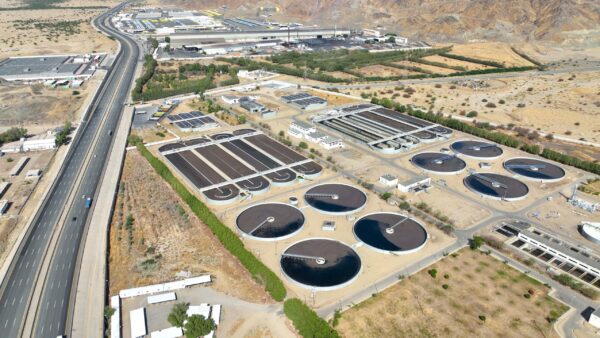

Oil prices have had an eventful 2016. The year started off with a major downward slide to a low of $28/barrel in January due to concerns of slowing global growth and currency devaluation risk in China, the Qatar National Bank said in its latest commodity report. Prices then recovered to around $50/barrel by mid-year, only to moderate to a year-to-date average of $42/barrel. Given the stronger-than-expected rebalancing currently underway in the oil market, the bank has revised its forecast upwards and currently expects oil prices to average $44.70/barrel later this year and also that continued rebalancing in the oil market will lift prices to an average of $55/barrel in 2017 and $58/barrel the following year, it added.
“The big oil companies that carry out a lot of exploration and production activities and invest in the upstream sector of the multi-billion-dollar industry are really hurting, with rig counts and crude oil output decreasing in the U.S., Mexico, Canada and Europe,” said Robert McDonough, Vice President with Hill’s Global Strategic Clients (GSC) Group. Led by Senior Vice President Vince D’Ambrosio, the GSC Group’s focus is global, private sector companies in all sectors. Recent O&G clients include Chevron, Phillips 66, CNRL and Nexen.
This is not the first time that McDonough has seen fluctuations in oil prices over the past three decades, nor will it be the last. “As such, the capital program of the major players has been cut back significantly. But the sunny side of the story is that operators have used the low crude oil and natural gas prices as a raw material to make money in the downstream sector,” McDonough said, referring in particular to refinery operators and petrochemical producers.
The need to get products to markets and end-users has also resulted in an ongoing demand for the midstream/transportation and distribution sectors of the hydrocarbon industry. “There is a need for pipelines, rail and trucks and along with terminals for storage, gas treatment facilities, compression stations for gas and pump stations for oil. Although some operators have hit roadblocks with the regulatory approval process and growing opposition from environmental lobbies, First Nations bands and stakeholders, this is still a sector that is attracting investments in this downturn,” he said. McDonough’s statements come in the backdrop of incessant delays being faced by Calgary-based Enbridge to build its 525,000 barrels/day Northern Gateway pipeline from land-locked Alberta to an export terminal in British Columbia on the Canadian Pacific Coast and a planned expansion of the Trans Mountain crude oil pipeline also in Western Canada.
Hill International has been successful in placing its personnel with owners and operators of pipelines, refinery operators, and petrochemical manufacturing facilities however. “We will still continue to do that, while decisions are pending from some petrochemical producers to place more personnel under staff augmentation contracts. The process has been selective, but we were able to differentiate from the others due to our policies of secondment and staffing and it has been paying off,” he said. Besides staff placements, Hill has also been working with oil and gas clients on project governance, risk analysis, gap analysis and closure, setting up a system of procedures for contract administration and best practices, contract strategy assessment and maximizing cost efficiencies and dispute resolution with project lenders, to name a few, McDonough said.
A significant aspect of the oil price downturn has been the ability of shale gas oil and gas producers to reduce capital costs of projects by 40% to 50% compared to what it was a couple of years ago, McDonough said. “Well paid operators have gotten very efficient and along with capital cost, they have also brought down operating costs dramatically,” he noted. This would imply those producers can “survive” at a “much lower price” and do not necessarily need a WTI price of $60/barrel to open up the purse strings. “If prices went to mid-to-high $40s/barrel and sustained at that, or reached $50/barrel, for shale players in the U.S. we will see a significant difference in Q2, 2017 and the rest of that year,” he said. Also, OPEC is starting to say that they may like to control supply and that may raise prices, McDonough said, explaining that some major producers that depend on crude oil revenues to fund their social development programs will have to start making moves to raise oil prices. “If OPEC makes that move, that would shore up oil prices to the low to mid-$50/barrel,” he said, pointing out that “we are at a point where many shale oil producers can survive at oil in the low to mid $40/barrel range.”
Hill positions for growth; gold prices looking up
Forecasting oil prices is a rather challenging exercise, as “there are so many integrated factors and it’s very hard to put your finger” on any one of them. But for its part, Hill International will pursue its policy of being selective and helping clients to improve their efficiency, operating costs and overall reduce project risks. “Canada is still on our focus and we are waiting for the market to get better,” McDonough said, adding that in the meantime Hill will pursue opportunities within its portfolio of services for prospective clients. “We may conduct independent reviews of projects to minimize risk, also called Independent Readiness Reviews. Some interests will trickle in from those companies that have projects with capital costs of over $1 billion,” he said.
The outcome will be awaited, but in the meanwhile, with gold prices increasing of late, the expectation is for an overall increase in all major commodity prices and increased project spending by gold producers. “Gold prices have increased by some 30-35% in just the past year. And if it continues to increase, along with the increase in oil prices, several new opportunities will be opened up for us,” McDonough said.
The shale revolution in the U.S. has been a game changer for oil and also the intrinsic nature as a market, the QNB report said. When markets are over-supplied and prices fall, they tend to adjust through two channels. First, high-cost producers tend to exit the market as their businesses become non-viable. Second, low prices encourage higher consumption which provide support to prices. These dynamics are currently underway in the oil market and are progressing in a manner that is faster than previously expected. This does not mean a return to a world in which oil prices exceeded $100/barrel for several years, but a price of $60/barrel is probably within range in the medium term, it said. If the QNB report holds true, few will deny that the worst of the oil price downturn is behind us with new opportunities for Hill International in the not-too-distant horizon.
by Ashok Dutta
Share

June 23, 2025 | Articles
Jeffrey Hurley Joins Hill’s Northern California Rail Practice

June 23, 2025 | Articles
Ready, Set, Grow: First VP Chad Koelling Takes Charge of Hill’s Mountain West Region

June 8, 2025 | Articles
PMO in Saudi Arabia: The Holistic Approach to Realizing a National Mega-Portfolio

June 1, 2025 | Articles

May 26, 2025 | Articles

May 12, 2025 | Articles
Keeping Your Water/Wastewater Programs Flowing with Public Relations

April 27, 2025 | Articles
Oiling the Machine: Steps to Successful Permitting on Infrastructure Megaprojects

April 20, 2025 | Articles
Sustainable Scaling: Solutions for Managing Risk on Europe’s Data Center Projects